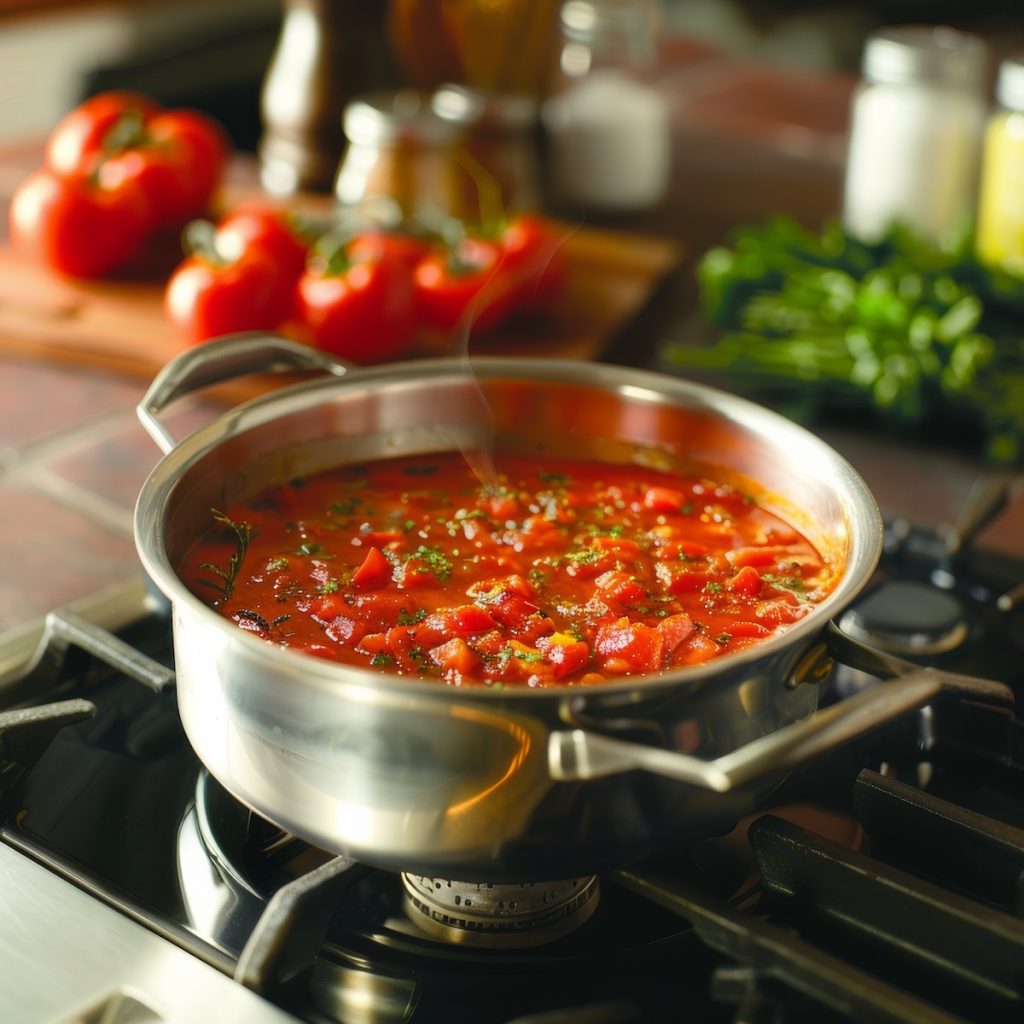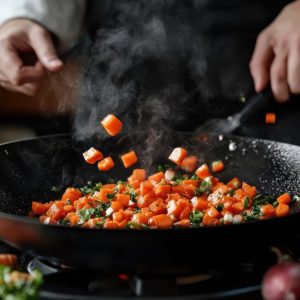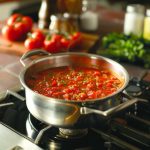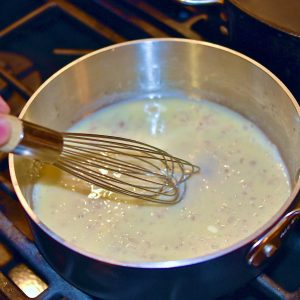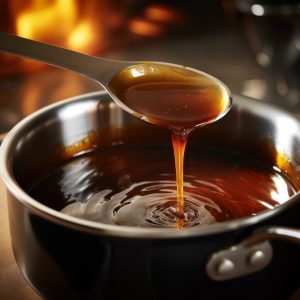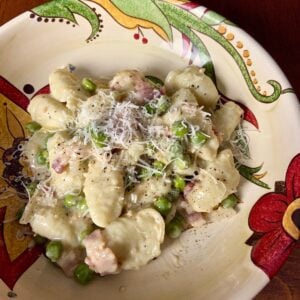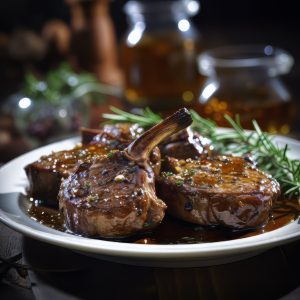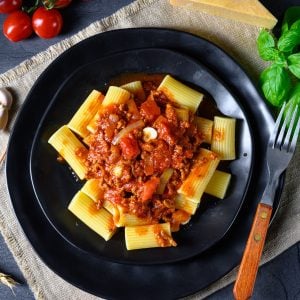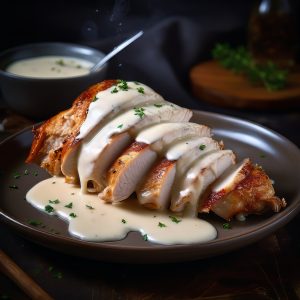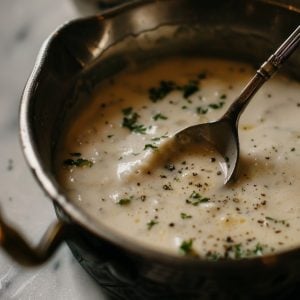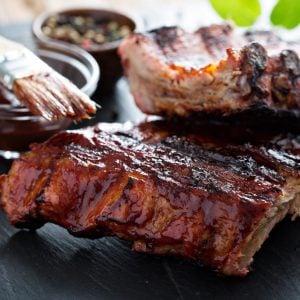How to Make a Delicious Provençale Sauce
If you’ve ever wanted to bring the flavors of the French countryside into your kitchen, classic Provençale sauce is the way to do it.
This rustic, tomato-based sauce hails from the Provence region of southern France, where sunshine, garlic, olives, and herbs like thyme and rosemary reign supreme. Provençale sauce captures all those bright, earthy notes in one simple, deeply flavorful dish.
At its heart, it’s a blend of tomatoes, garlic, olive oil, and herbs, often with a splash of white wine or a handful of olives and capers for added depth. It’s incredibly versatile—you can spoon it over grilled fish or chicken, stir it into pasta, or use it to liven up roasted vegetables. Best of all, it comes together easily in one pan, making it a favorite for weeknight cooking or last-minute guests.
This isn’t one of those sauces you need to babysit all day. The ingredients do the heavy lifting.
Whether you’re simmering a batch for dinner tonight or freezing a jar for later, Provençale sauce is a classic worth knowing. Let’s break it down so you can start bringing that Mediterranean magic to your own table.
Provencale Sauce Recipe
Ingredients
- 2 tablespoons olive oil
- 1 yellow onion finely chopped
- salt & pepper
- 2 pounds fresh tomatoes or 1 - 35-ounce can plum tomatoes, drained, chopped
- 2 cups white wine
- ¼ cup olive oil
- 4 cloves garlic finely chopped
- 1 cup cured black olives pitted and coarsely chopped
- 1 tablespoon capers drained
- ½ cup fresh herbs including basil parsley and thyme, roughly chopped
Instructions
- Heat a medium sized saucepan over medium heat.
- When hot, add 2 tablespoons olive oil, then the chopped onion. Season with a little salt and pepper.
- Cook the onions for about 6 minutes until they begin to soften but don't let them brown. Be sure to stir often so they don't burn.
- Add the tomatoes, cover the pan and cook over medium heat for 10 minutes to let the tomatoes release their juices. Again, don't forget to stir to help things along.
- Add the wine and simmer the tomatoes uncovered on medium-low to medium heat for about 50 minutes or until the sauce gets thick and there is very little liquid left.
- Using a blender, food processor or food mill, whatever you have available in your kitchen, carefully puree the sauce and reserve. Clean and dry the saucepan to cook the garlic, capers and olives.
- Heat the saucepan over medium-low heat and when hot, add the ¼ cup of olive oil.
- Add the chopped garlic and saute for about 5 minutes until golden but don't let the garlic burn.
- Add the capers and chopped olives and cook for 5 more minutes.
- Transfer the cooked tomato sauce back to the saucepan and stir in the fresh herbs. Taste and adjust seasonings with salt and pepper.
- The sauce is ready to be served over chicken, fish, meat or pasta. If you don't use it all up, freeze some for a later meal. Great to have this sauce on-hand.
Where to Use Provençale Sauce
Food | Why It Works | Wine Pairing |
| Grilled Chicken | Mild flavor absorbs the sauce’s garlic, tomato, and herb notes | Côtes de Provence Rosé or Sauvignon Blanc |
| White Fish (e.g., Cod, Halibut) | Light, flaky fish balances the acidity and herbs in the sauce | Vermentino or Picpoul de Pinet |
| Roasted Eggplant | Earthy and soft, eggplant soaks up the savory sauce beautifully | Grenache or dry Rosé |
| Pan-Seared Pork Chops | The tangy tomato base complements the richness of pork | Côtes du Rhône or Syrah |
| Ratatouille | Layered Provençal flavors create harmony with the sauce | Red Bandol or young Pinot Noir |
| Grilled Polenta | Crisp edges and creamy center pair well with the sauce’s texture and acidity | Marsanne or Viognier |
| Stuffed Peppers | A natural pairing with tomato and herb-forward fillings | Merlot or Cabernet Franc |
| Shrimp or Mussels | Shellfish sweetness contrasts with garlic and tomato brightness | Muscadet or dry Provençal Rosé |
Ingredients and Preparation
The fundamental ingredients of Provençale sauce typically include tomatoes, garlic, onions, and olive oil. To this base, chefs often add a variety of herbs such as thyme, rosemary, and basil, which are staples in Provençal cooking. The inclusion of black olives and capers is also common, adding a briny depth to the sauce.
The preparation begins with sautéing finely chopped onions and garlic in olive oil until they are soft and fragrant. Chopped tomatoes are then added, along with a pinch of salt and pepper. The mixture is allowed to simmer, reducing to a rich, thick consistency. Fresh herbs are added towards the end of cooking to preserve their vibrant flavors. The sauce can be customized with additional ingredients like bell peppers, mushrooms, or white wine, depending on the desired complexity and use.
Cultural Significance
Provençale sauce is more than just a culinary delight; it is a reflection of the Provençal way of life, which values simplicity, freshness, and a connection to the land. The ingredients themselves tell the story of the region’s sunny climate and fertile soil, which produce some of the finest tomatoes, olives, and herbs in the world.
The sauce also embodies the Mediterranean diet, which is celebrated for its health benefits. Olive oil, garlic, and tomatoes are all known for their heart-healthy properties, making Provençale sauce not only delicious but also nutritious.
Provençale sauce is a quintessential element of Provençal cuisine, embodying the flavors and philosophy of the Mediterranean. Its versatility, rich taste, and health benefits make it a cherished component of many dishes, bringing the spirit of Provence to tables around the world.
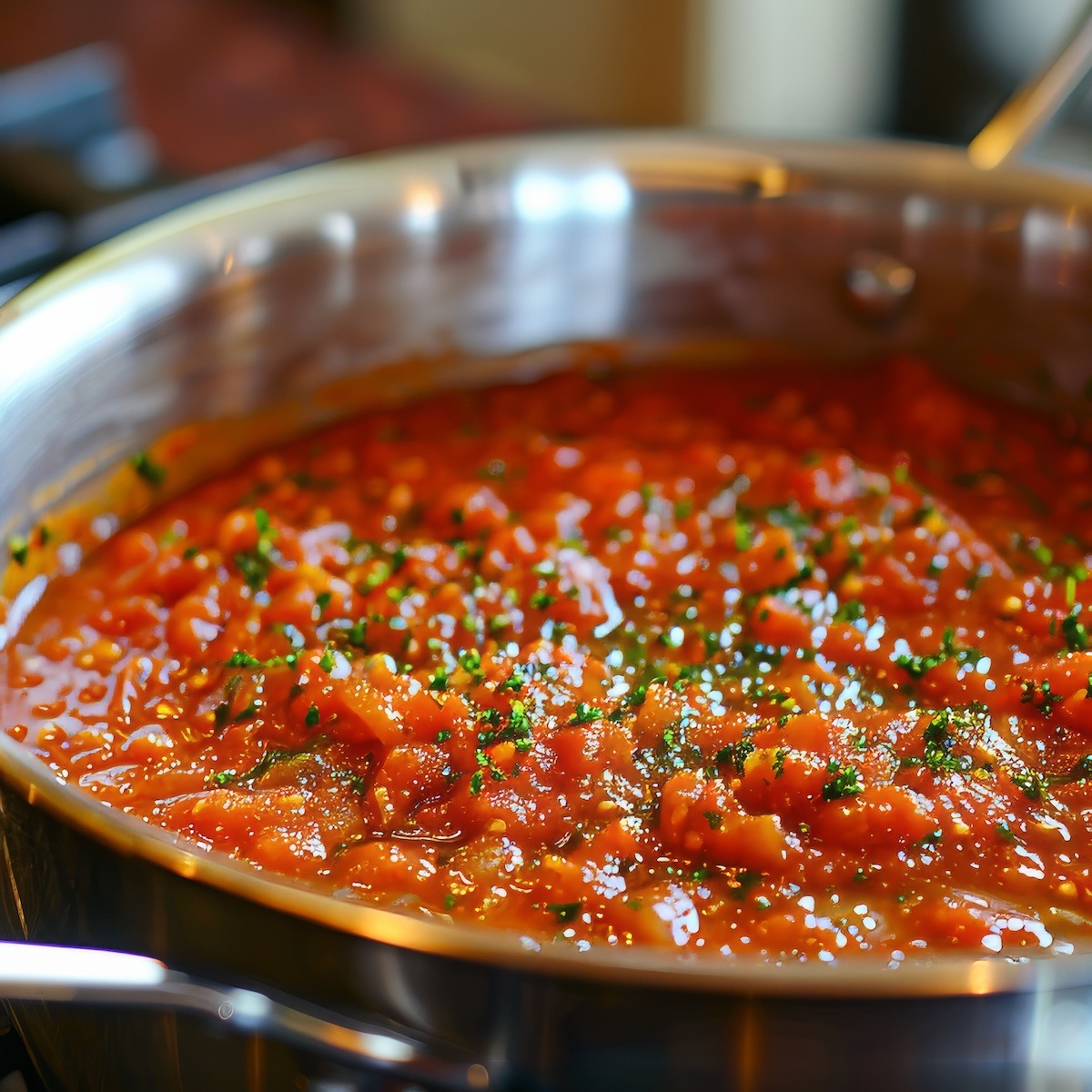
History of Provençale Sauce
The history of Provençale sauce is deeply intertwined with the culinary and agricultural traditions of Provence, a region in southeastern France. This area, known for its sunny climate and fertile soil, has a rich gastronomic heritage that dates back centuries. Like many elements of French cuisine, the sauce itself evolved over time, influenced by local ingredients, cultural exchanges, and historical events.
Ancient Influences
Provence has been inhabited since prehistoric times, and its culinary practices have been shaped by various civilizations, including the Greeks, Romans, and Moors. The Greeks and Romans introduced viticulture and olive cultivation to the region, which laid the foundation for many Provençal dishes. Olive oil, a key component of Provençale sauce, became a staple in local cooking due to these early influences.
Medieval and Renaissance Periods
During the medieval period, Provence was a cultural crossroads, where trade routes brought new ingredients and culinary ideas from other parts of Europe and the Mediterranean. This period saw the introduction of spices and new cooking techniques. The use of garlic and herbs like thyme, rosemary, and basil became more pronounced, aligning with the flavors that characterize Provençale sauce today.
In the Renaissance, Provençal cuisine began to take on a more distinct identity. Tomatoes, which originated in the Americas and were brought to Europe by Spanish explorers in the 16th century, eventually made their way into Provençal cooking. Although initially met with suspicion, tomatoes were gradually embraced and became a fundamental ingredient in Provençale sauce.
Modern Development
The 19th and 20th centuries saw the formalization of many French culinary traditions. Provençale sauce, as we recognize it today, became more standardized during this period. French cuisine gained international acclaim, and the recipes were documented and refined by chefs and culinary writers. Auguste Escoffier, a renowned French chef, played a significant role in codifying French sauces, including Provençale, in his seminal work “Le Guide Culinaire.”
Provençale Sauce in Contemporary Cuisine
Today, Provençale sauce is celebrated not only in Provence but around the world. It is a symbol of the Mediterranean diet, known for its health benefits and vibrant flavors. The sauce’s popularity continues to grow as more people seek to incorporate fresh, wholesome ingredients into their diets.
The cultural significance of Provençale sauce remains strong. It is a staple in both traditional and modern Provençal dishes, reflecting the region’s agricultural bounty and culinary heritage. Whether used in classic recipes or innovative new dishes, Provençale sauce brings a taste of Provence to kitchens everywhere, continuing a tradition that spans centuries.
Tomato Conversion Chart
Some recipes call for fresh tomatoes, while others use canned tomatoes, and this can get confusing. For example, this recipe requires 2 pounds of fresh tomatoes, but what if tomatoes are out of season or you want to use canned?
If you check out my tomato conversion chart, you’ll see that one 35-ounce can of tomatoes equals 4 cups of tomatoes. You’ll also see that 2 cups of chopped tomatoes equals 1 pound, so a 35-ounce can should yield approximately 2 pounds of fresh tomatoes.

